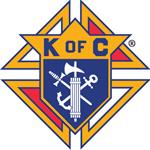These Men They Call Knights
The Knights of Columbus is a Catholic men's fraternal benefit society that was formed to render financial aid to members and their families. Mutual aid and assistance are offered to sick, disabled and needy members and their families. Social and intellectual fellowship is promoted among members and their families through educational, charitable, religious, social welfare, war relief and public relief works.
The history of the Order shows how the foresight of Father Michael J. McGivney, whose cause for sainthood is being investigated by the Vatican, brought about what has become the world's foremost Catholic fraternal benefit society. The Order has helped families obtain economic security and stability through its life insurance, annuity and long-term care programs, and has contributed time and energy worldwide to service in communities.
The Knights of Columbus has grown from several members in one council to more than 12,000 councils and 1.7 million members throughout the United States, Canada, the Philippines, Mexico, the Dominican Republic, Puerto Rico, Panama, the Bahamas, the Virgin Islands, Guatemala, Guam and Saipan.
The history of the Order shows how the foresight of Father Michael J. McGivney, whose cause for sainthood is being investigated by the Vatican, brought about what has become the world's foremost Catholic fraternal benefit society. The Order has helped families obtain economic security and stability through its life insurance, annuity and long-term care programs, and has contributed time and energy worldwide to service in communities.
The Knights of Columbus has grown from several members in one council to more than 12,000 councils and 1.7 million members throughout the United States, Canada, the Philippines, Mexico, the Dominican Republic, Puerto Rico, Panama, the Bahamas, the Virgin Islands, Guatemala, Guam and Saipan.
There are four "Degrees" of Knighthood within the Knights of Columbus. The initiation ceremonies into each of these Degrees (the ceremonies themselves are also called "Degrees") are the only facets of the Order which are not made known to non-members. Each of the Degrees is designed to exemplify one of the four Principals of the Order: Charity, Unity, Fraternity and Patriotism. The Degrees must be taken in order.
Every applicant must take the First, or Membership, Degree before he can be considered a Member of the Knights of Columbus. Once he has taken his First Degree, he becomes a member in good standing in the Order. To reach full Knighthood, members must also take the Second and Third Degrees, and all members are strongly encouraged to do so. Members must have taken the Third degree to be elected to Council offices or to enter into the Fourth Degree.
Once a man has been a member of the Knights of Columbus for a year and has taken his Third Degree, he is eligible to join a Fourth Degree Assembly. The Fourth Degree has its own structure separate from that of the Council. Fourth Degree Assemblies gain their membership from Third Degree members of several Councils within a larger geographic area. The most visible members of the Order are often the Fourth Degree Color Corps, with their colorful capes, chapeaux and sabers.
Every applicant must take the First, or Membership, Degree before he can be considered a Member of the Knights of Columbus. Once he has taken his First Degree, he becomes a member in good standing in the Order. To reach full Knighthood, members must also take the Second and Third Degrees, and all members are strongly encouraged to do so. Members must have taken the Third degree to be elected to Council offices or to enter into the Fourth Degree.
Once a man has been a member of the Knights of Columbus for a year and has taken his Third Degree, he is eligible to join a Fourth Degree Assembly. The Fourth Degree has its own structure separate from that of the Council. Fourth Degree Assemblies gain their membership from Third Degree members of several Councils within a larger geographic area. The most visible members of the Order are often the Fourth Degree Color Corps, with their colorful capes, chapeaux and sabers.
Ceremonials Of The Order
The emblem of the Order dates from the second Supreme Council meeting on May 12, 1883, when James T. Mullen, who was then supreme knight, designed it.
The emblem indicates a shield mounted upon the Formée cross (having the arms narrow at the center and expanding toward the ends). The shield is that associated with a medieval knight. The Formée cross is the representation of a traditional artistic design of the cross of Christ through which all graces of redemption were procured for mankind. This then represents the Catholic spirit of the Order.
Mounted on the shield are three objects: a fasces (a bundle of rods bound together about an ax with the blade projecting) standing vertically and, crossed behind it, an anchor and a dagger or short sword. The fasces from Roman days, carried before magistrates as an emblem of authority, is symbolic of authority which must exist in any tightly-bonded and efficiently operating organization. The anchor is the mariner's symbol for Columbus, patron of the Order, while the short sword or dagger was the weapon of the Knight when engaged upon an errand of mercy. Thus, the shield expresses Catholic Knighthood in organized merciful action, and with the letters, K of C, it proclaims this specific form of activity.
The emblem indicates a shield mounted upon the Formée cross (having the arms narrow at the center and expanding toward the ends). The shield is that associated with a medieval knight. The Formée cross is the representation of a traditional artistic design of the cross of Christ through which all graces of redemption were procured for mankind. This then represents the Catholic spirit of the Order.
Mounted on the shield are three objects: a fasces (a bundle of rods bound together about an ax with the blade projecting) standing vertically and, crossed behind it, an anchor and a dagger or short sword. The fasces from Roman days, carried before magistrates as an emblem of authority, is symbolic of authority which must exist in any tightly-bonded and efficiently operating organization. The anchor is the mariner's symbol for Columbus, patron of the Order, while the short sword or dagger was the weapon of the Knight when engaged upon an errand of mercy. Thus, the shield expresses Catholic Knighthood in organized merciful action, and with the letters, K of C, it proclaims this specific form of activity.
Emblem Of The Order


Father Maguire Council 3851
Covina/West Covina, CA






